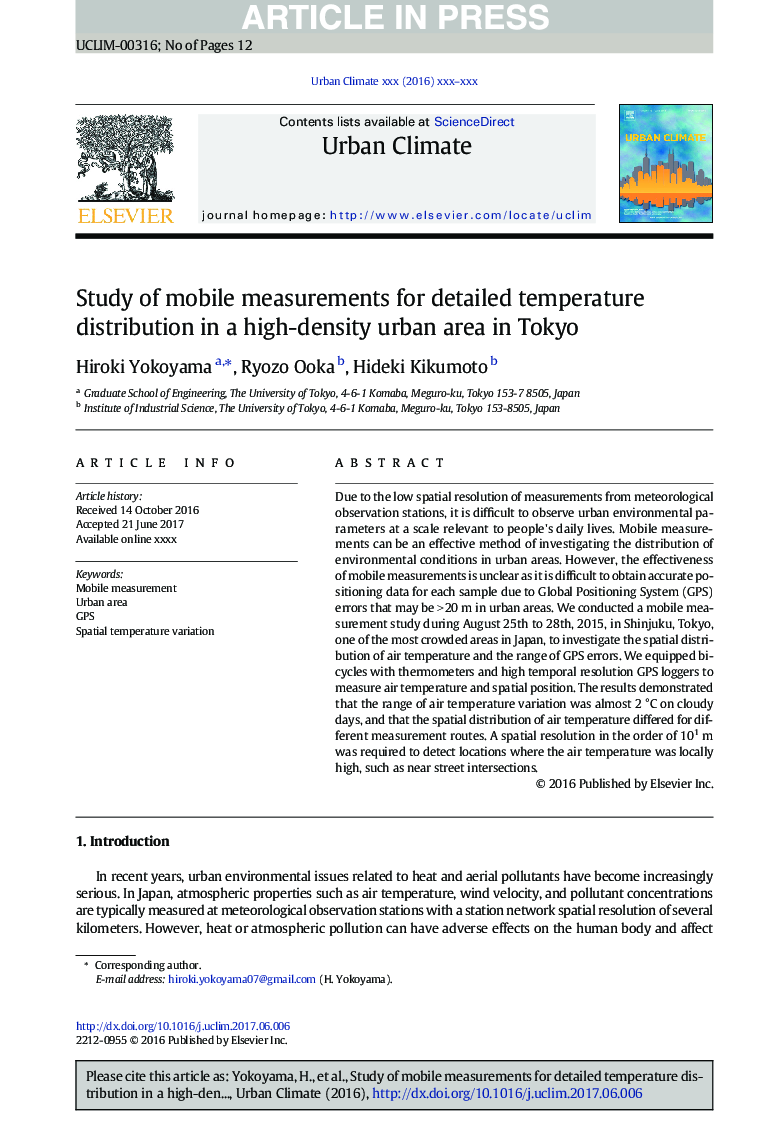| Article ID | Journal | Published Year | Pages | File Type |
|---|---|---|---|---|
| 6576890 | Urban Climate | 2018 | 12 Pages |
Abstract
Due to the low spatial resolution of measurements from meteorological observation stations, it is difficult to observe urban environmental parameters at a scale relevant to people's daily lives. Mobile measurements can be an effective method of investigating the distribution of environmental conditions in urban areas. However, the effectiveness of mobile measurements is unclear as it is difficult to obtain accurate positioning data for each sample due to Global Positioning System (GPS) errors that may be > 20 m in urban areas. We conducted a mobile measurement study during August 25th to 28th, 2015, in Shinjuku, Tokyo, one of the most crowded areas in Japan, to investigate the spatial distribution of air temperature and the range of GPS errors. We equipped bicycles with thermometers and high temporal resolution GPS loggers to measure air temperature and spatial position. The results demonstrated that the range of air temperature variation was almost 2 °C on cloudy days, and that the spatial distribution of air temperature differed for different measurement routes. A spatial resolution in the order of 101 m was required to detect locations where the air temperature was locally high, such as near street intersections.
Keywords
Related Topics
Physical Sciences and Engineering
Earth and Planetary Sciences
Earth and Planetary Sciences (General)
Authors
Hiroki Yokoyama, Ryozo Ooka, Hideki Kikumoto,
